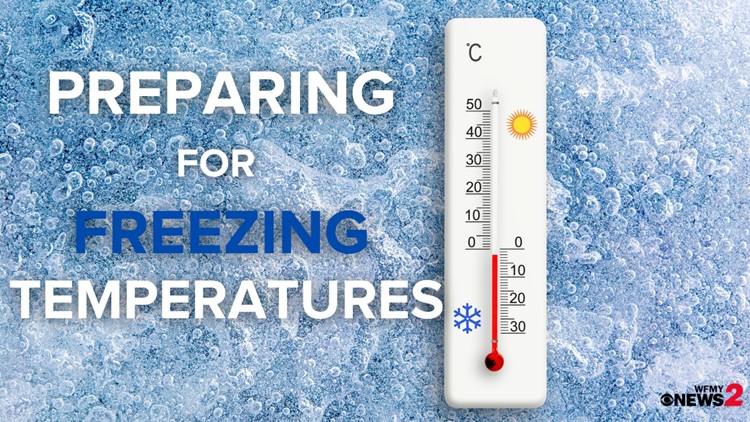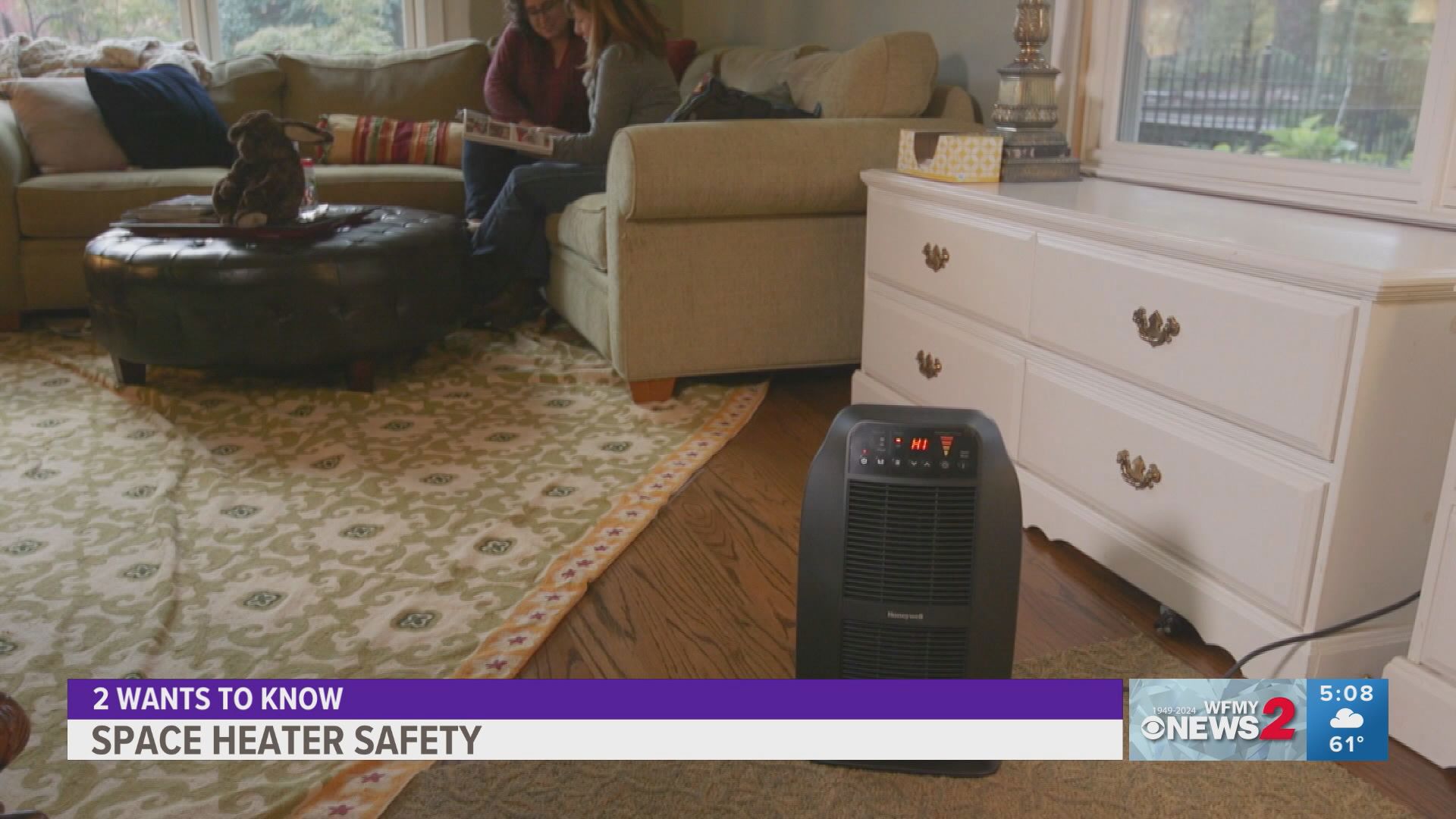GREENSBORO, N.C. — Any time there is extreme weather approaching such as an Arctic Blast, you might want to take steps to prepare yourself, your family, and your home for any extreme weather events.
Many of us are usually worried about the heat and power going out for hours or even days at a time. However, the National Weather Service referred to winter storms as "deceptive killers" due to things associated with the storms like deadly traffic crashes due to the icy road conditions or people dying from carbon monoxide poisoning from the lack of knowledge on how to heat or power a home during a storm.
In the event of any winter weather, this guide can help to prevent any type of deadly weather-related accidents.
Readync.gov has provided lots of information to help equip everyone with tips before winter storms strike.
Before
- Kit Check List: (Be sure to update or restock your kit regularly)
- First Aid Kit — with a 7-day supply of medication and medical supplies
- Spare change of clothes
- Spare car/home key
- Family and emergency contact info (phone and email)
- Pet supplies (collar, leash, tags, food, bowl)
- Copies of personal documents
- 1 gallon of water per person, per day (seven-day supply)
- 7-day supply of non-perishable food, can opener
- Battery-powered or hand-crank radio (NOAA Weather Radio, if possible)
- Cellphone, chargers, flashlight, extra batteries
- Sanitation, personal hygiene items, blankets
- Wrench or plyer
- Other tools or equipment you may need
- Other emergency supplies to have:
- Rock salt or other environmentally safe products to melt ice on walkways.
- Sand or even kitty litter as an alternative to make traction better.
- Snow shovels, snow scrappers, and any other snow removal equipment.
- Have plenty of heating fuel. Store a good supply of dry, seasoned wood for your fireplace or wood-burning stove.
- Have enough clothing and blankets to keep you warm.
- Make a family communications plan. Your family may not be together when disaster strikes, so know how you will get in touch with one another, how you will get back together, and what you will do in case of an emergency.
- Listen to a NOAA weather radio or other local news channels for important information from the National Weather Service (NWS). Know when the weather changes.
- Try not to travel. If travel is needed, keep a disaster supplies kit in your vehicle.
- Bring pets inside during winter weather. Move other animals or livestock to sheltered areas with non-frozen drinking water.
- If you have a fireplace, store a good supply of dry, seasoned wood.
- NEVER USE A CHARCOAL GRILL OR CAMP STOVE INDOORS FOR EITHER COOKING OR HEATING. THE FUMES CAN BE TOXIC.
- Visit the N.C. Division of Public Health for more information, facts and figures, prevention guidance, prevention posters, infographics, and factsheets on preventing Carbon Monoxide poisoning.
Winterize your home:
- Winterize your home by insulating walls and attics, caulking, and weather-stripping doors and windows. Install storm windows or cover windows with plastic.
- Winterize your house, barn, shed, or any other structure that may give shelter to your family, neighbors, livestock, or equipment.
- Clear rain gutters. Fix roof leaks and cut away tree branches that could fall on a house or other structure during a storm.
- Keep heating equipment and chimneys by having them cleaned and checked every year.
- Insulate pipes and allow faucets to drip a little during cold weather to keep them from freezing. Running water, even at a trickle, helps keep pipes from freezing.
- All fuel-burning equipment should be vented to the outside and kept clear.
- Keep fire extinguishers on hand. Make sure everyone in your house knows how to use them. House fires can be an extra risk, as more people turn to alternate heating sources without taking the needed safety precautions.
- Learn how to shut off water valves in case a pipe bursts.
- Insulate your home by installing storm windows or covering windows with plastic from the inside to keep cold air out.
- Hire a skilled contractor to check the structural ability of the roof to hold unusually heavy weight from the accumulation of snow - or water, if drains on flat roofs do not work.
During
- Stay indoors during the storm.
- Walk carefully on snowy, icy, walkways.
- Try not to do too much when shoveling snow. Doing too much, or overexertion can bring on a heart attack—a major cause of death in the winter. If you must shovel snow, stretch before going outside.
- Keep dry. Change wet clothing often to stop a loss of body heat. Wet clothing loses all of its insulating value and spreads heat rapidly.
- Wear a lot of layers of thin clothing to stay warm. You can easily take off layers to stay comfortable. Wear a hat. Most body heat is lost through the top of the head. Cover your mouth with scarves to protect your lungs from directly breathing in extremely cold air.
- Watch for signs of frostbite. These include loss of feeling and a white or pale look of fingers, toes, ear lobes, and the tip of the nose. If you see these symptoms, get medical help.
- Watch for signs of hypothermia. These include uncontrollable shivering, memory loss, disorientation, incoherence, slurred speech, drowsiness, and visible exhaustion. If you see these symptoms, get the person to a warm place. Take off wet clothing. Warm the center of the body first. Give the person warm, non-alcoholic drinks if he/she is conscious. Get medical help as soon as you can.
- Drive only if it is necessary. Follow the suggestions in the "tips for driving in winter weather" section.
- If the pipes freeze, take off any insulation or layers of newspapers. Wrap pipes in rags. Completely open all faucets. Pour hot water over the pipes, starting where they were most open to the cold or where the cold was most likely to enter.
- Keep the area aired when using kerosene heaters to not build up toxic fumes. Refuel kerosene heaters outside. Keep them at least three feet from flammable objects.
- Conserve fuel, if necessary, by keeping your home cooler than normal. For the time being close off heat to some rooms.
- Keep fire extinguishers on hand. Make sure your family knows how to use them. Know fire prevention rules.
- If you will be going away during cold weather, leave the heat on in your home. Set the temperature no lower than 55ºF.
After
- Go to the selected public shelter for your area, if your home loses power or heat during periods of extreme cold.
- Protect yourself from frostbite and hypothermia by wearing warm, loose-fitting, lightweight clothing in many layers. Stay indoors, if possible.
If you must travel, the North Carolina Highway Patrol suggests the following:
- Reduce your speed. Driving at the regular speed limit will lower your chances of controlling the car if you begin to slide.
- Leave plenty of room between you and other vehicles.
- Bridges and overpasses collect ice first. Approach them with a lot of caution. Do not push your brakes while on the bridge.
- If you do begin to slide, take your foot off the gas. Turn the steering wheel IN THE DIRECTION OF THE SLIDE. Do NOT push the brakes as that will cause further loss of control of the car.
- Pull off the highway. Stay calm and stay inside your vehicle. At night, turn on the inside dome light, so work and rescue crews can see you.
- Set your directional lights to "flashing" and hang a cloth or distress flag from the radio aerial or window.
- In a rural or wilderness area, put a large cloth over the snow to get rescue crews who may be looking at the area by airplane to see you.
- Do not go out on foot unless you can see a building close by where you know you can take shelter.
- If you run the engine to keep warm, open a window a little bit for air. This will keep you safe from possible carbon monoxide poisoning. When you can, clear away snow from the exhaust pipe.
- Exercise to keep body heat, but try not to do too much. In extreme cold, use road maps, seat covers, and floor mats for insulation. Huddle with passengers and use your coat as a blanket.
- Never let everyone in the car sleep at once. One person should stay awake to look out for rescue crews.
- Be careful not to use battery power. Balance electrical energy needs - the use of lights, heat, and radio - with your supply.



